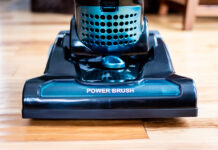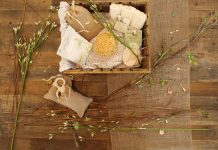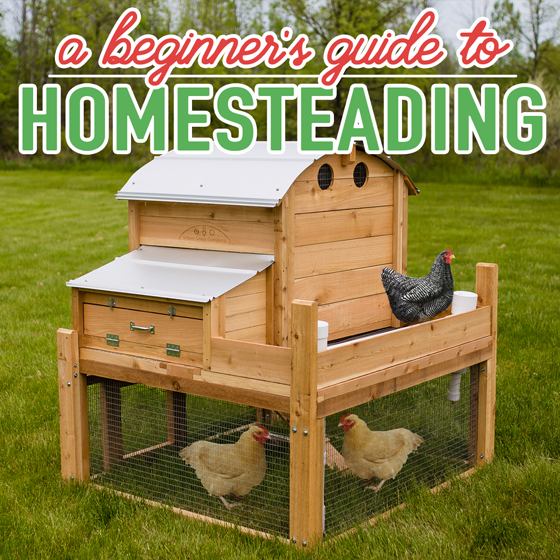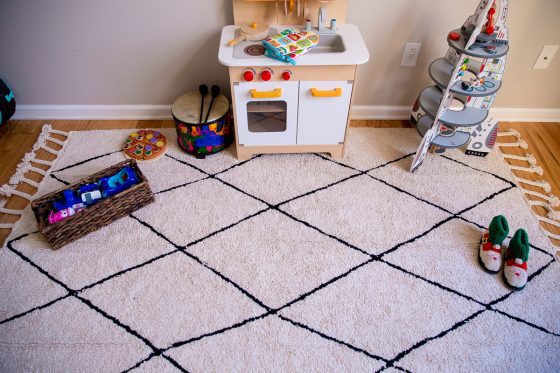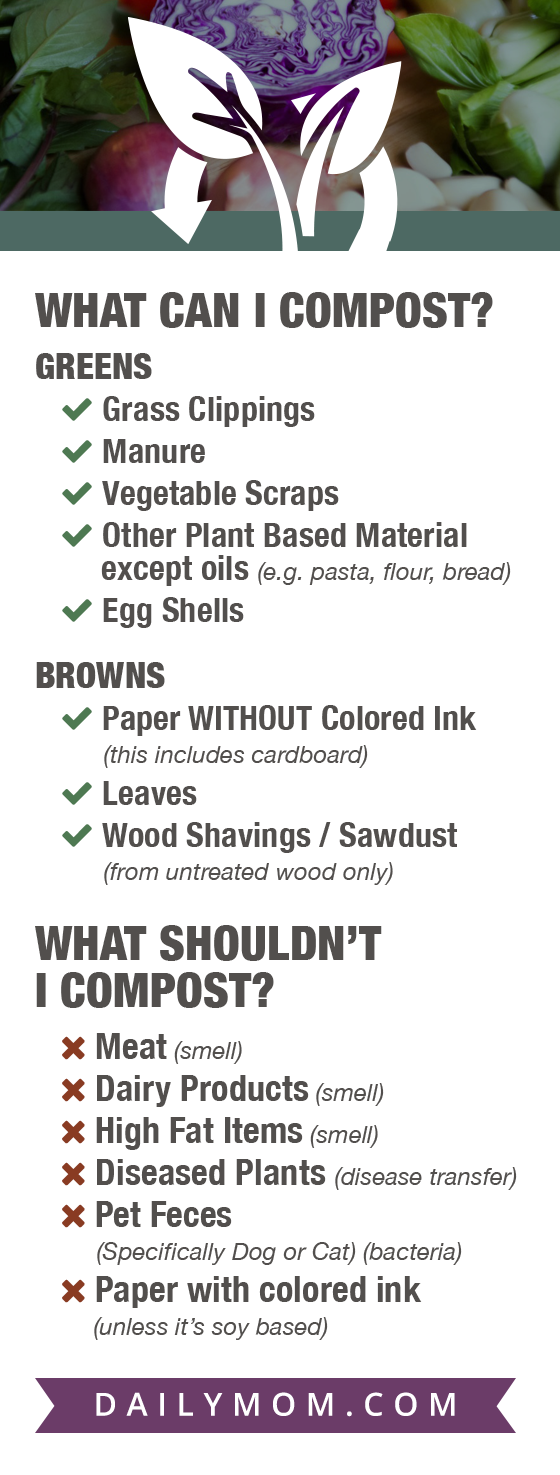Times seem to be changing drastically all around us. Millennials are proudly sporting beards and using words like “Lumbersexual” to describe a whole different genre branch-off of hipsters. Across the U.S., people are selling their downtown loft apartments and yearning to take a step backward in time, and kick it old-school style by taking up a lifestyle probably similar to that of their grandparents. We’re talking about homesteading, and whether you live on a half-acre suburban plot, or out in the boonies on 20 acres, it’s possible to achieve that lifestyle, and become thriving, self-sufficient homesteaders.
Homestead Living
First things first, take that mental image of The Beverly Hillbillies Clampett family’s house in the Ozark Mountains and erase it from your memory. Homesteading isn’t just for people who are afraid of a nationwide nuclear holocaust, or anti-social people wanting to escape the world and live “off the grid.” In fact, there are many components to having a successful, eco-friendly home and surroundings that should appeal to most people.
Does the idea of growing your own organic fruits and veggies appeal to you? Wouldn’t it be nice to save all that money at the grocery store every single summer?
Do you have a soft spot in your heart for animals? Owning animals at a small farm or homestead capacity is extremely beneficial for your family, nutritionally speaking. It also appeals to the animal-lover inside many of us, making it a fun bonding activity for adults and children to enjoy together.
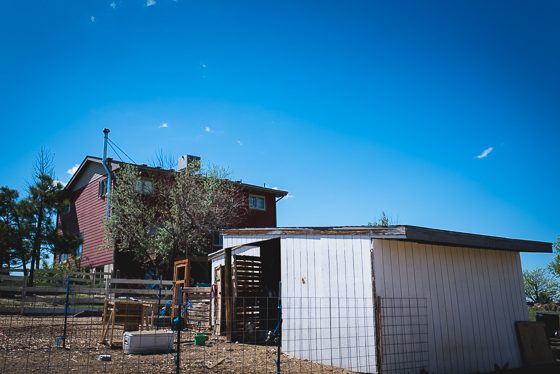
Before you begin
The very first thing you must do is plot out your land and match it up with your top priorities. You may yearn to own a small cow or two, but find out down the road that you live in a residential-only zoned plot of land that specifically forbids animals aside from house pets such as dogs and cats. Always check your zoning and local laws before committing to anything. Even something simple such as putting up a shed in your backyard can require pulling a building permit, depending on your location and the size you wish to construct. If you live in a homeowners association, make sure to also read over your paperwork there, as well.
After you’ve double triple checked your land and the zoning rights, it’s time to sit down with your family and discuss your top priorities. Is yielding an annual organic crop most important? Are you wanting to have a small backyard flock of chickens to keep your family in constant supply of farm-fresh eggs? It’s possible to do both with some planning and preparation.
Print out the Google Earth satellite view of your address and sit down at the dining room table and discuss placement. Remember to keep city ordinances in mind when you’re doing this, as many urban locations that allow backyard animals such as chickens also require them to be housed a certain distance away from a neighbor’s fence/property, and most urban locations will only allow hens (females) in order to keep the peace and not disturb neighbors with a rooster that crows all day long. Some cities have ordinances that prevent the collection of rainwater, and most HOA’s will frown over a compost heap in your side yard that’s visible from the street.
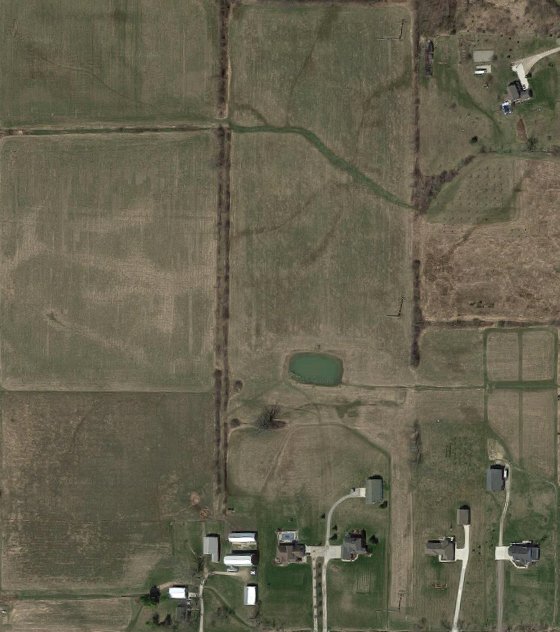
Plot your gardens convenient to a watering source, whether it be automatic sprinklers or a more sophisticated drip irrigation system. If you have animals, plot out their housing arrangements and decide if you’re going to be okay with schlepping that distance numerous times a day, sometimes carrying heavier items like feed and water, and doing it rain, snow, or shine.
Ready to explore some homesteading options for the basic beginner? We’ve broken it down into three easy sections. To jump to one specific category, click the thumbnail below.
Composting | Gardening | Raising Animals
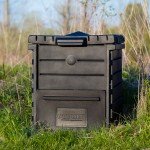 |
 |
 |
Composting
One of the easiest ways to convert anyone into basic homesteading is to tout the benefits of home composting. If you’re one of us country-dwellers that has a home septic tank, your system will thank you for not putting everything down the garbage disposal like you may have done in the past. If your home utilizes city water/sewage, you may not have this worry; however, composting is an easy chore that has tons of benefits if you give it a chance.
Composting is the purposeful biodegradation of organic matter, such as yard and food waste.
Composting:
- drastically reduces the amount of “solid” materials entering the waste stream, whether it be through the sewage system (sending it down the garbage disposal) or into landfills.
- drastically reduces water treatment necessary, as well as saves the homeowner additional costs such as water to run with the disposal, and electricity to run it.
- creates the richest, most beautiful soil that is nutrient-rich and sure to yield amazing crops.
- is simple and requires the least amount of equipment, making your initial investment small.
- can be monetized by selling additional compost to other homesteaders, or even at smaller farmer’s markets.
There are three different types of composting:
“Cold Composting” is the easiest way to begin composting and popular with newbies, because you literally don’t need anything to start except some old garbage. The compost should be piled up using a layer technique using an alternating mixture starting with a layer of brown compost and placing alternating layers on top of that *see infographic below for an easy cheat sheet*. The major con to cold composting is that it takes a while to break down and produce that beautiful compost soil. It can take upwards to a full calendar year to begin to see compost at the bottom of the pile, which may not work if you’re an “instant gratification” kind of person like some of us here.
“Hot Composting” is a pretty active way of composting, and is called “hot” because it relies on thermophilic, aerobic bacteria to decompose. It still uses the same layering technique as cold composting, but is housed in a specific composting apparatus, and many times requires you to actively turn and mix the compost weekly, depending on your composter. If properly housed and maintained, it can begin producing compost within as little time as 2-3 months. Hot composting is extremely popular because of the shorter turn-around time and minimal effort. While the initial cost may be higher than cold composting, the compost keeper typically has odor-prevention methods in place, which cuts down on any stinky smells. They also provide an easy way to keep all mess confined and in one place.
Product Recommendation
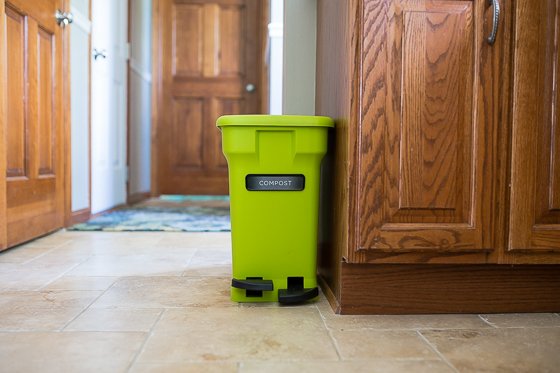
If you’re looking for an innovative way to compost in your home, kitchen or office (without the nasty smell!) you’ll love the Compokeeper. With the Compokeeper, you can collect all your compost items without having to worry about the mess, multiple trips to your composter, smell or fruit flies. The large, 6 gallon size allows you to not have to worry about making the trek to your composter outdoors every single day, and that proves extremely handy, especially during the winter months.
The bags that come with the Compokeeper are generously sized and can be thrown directly into your composter, since they will biodegrade easily and quickly. It also features an inner bag tote holder with handles, so it’s easy to remove the bag and keep in the mess, ensuring no drips on your way to the dump. The top of the Compokeeper has an awesome gripper that opens and shuts as you step on the bottom lever, and keeps the smell locked inside, yet opens easily when you need it to. If the sealer isn’t enough, a charcoal filter also attaches to the top to filter out any weird smells that aren’t caught right away.
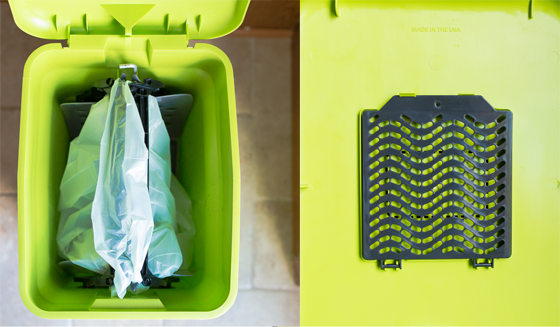
It can either be a freestanding composter, attractively matching any home decor, or can also be converted to fit underneath a cabinet nicely. It will fit seamlessly into your life going forward, because you can even sign up for auto-delivery for the bags on a monthly or bi-monthly basis.
The Compokeeper is available in 4 colors: green, white, black and red. It is 100% made in the U.S.A.
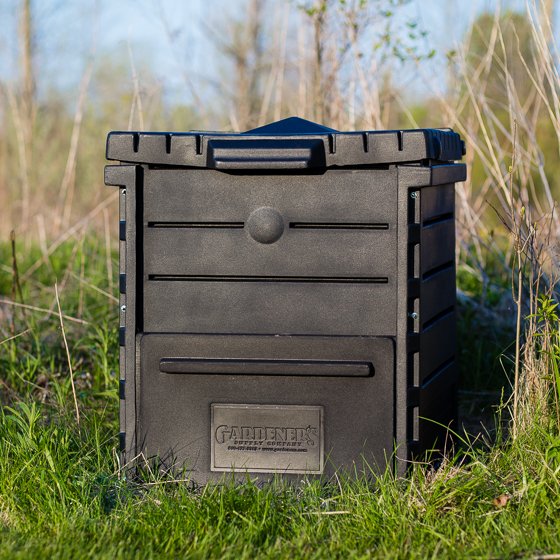
Every homesteader’s backyard should be equipped with some sort of composter. If you’ve decided that hot composting is for you, we absolutely love the Deluxe Pyramid Composter from Gardener’s Supply Company.
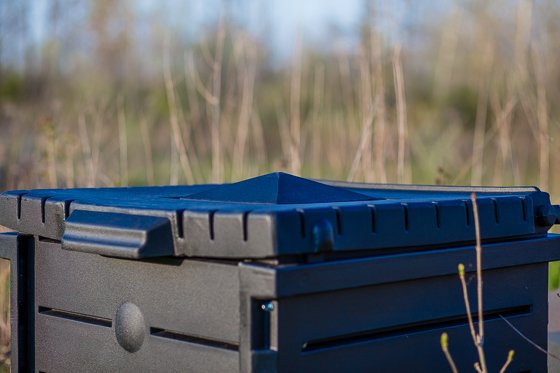
This innovative and easy to use composter features a one-of-a-kind rain catching pyramid style lid that catches the perfect amount of rain to moisten your pile, but not overly saturate it. It easily converts your kitchen scraps, leaves, yard clippings or chicken waste bedding into rich, nutrient-dense compost soil, in as little as 6 months.
It’s constructed of earth-friendly, 100% recycled plastic, and is durable and sturdy. If you live in a windy area, tie-down stakes are also available. The bottom of the Deluxe Pyramid Composter slides open to reveal the beautiful soil, and makes it the easiest composter to gather the soil from the bottom, while continuing to add items easily through the top lid.
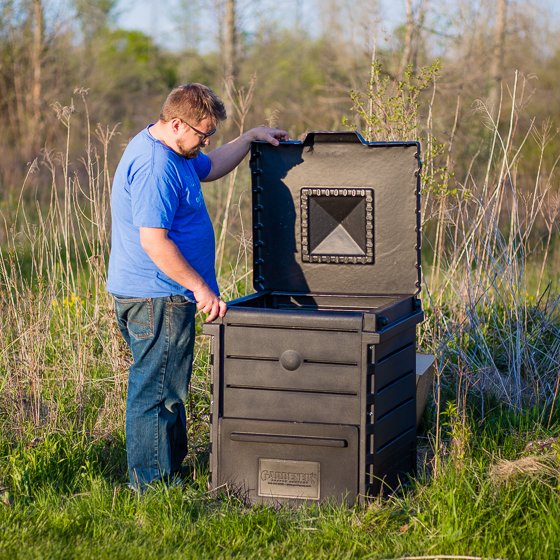
It’s available in two colors: black and brown. The large, 12 cubic feet capacity composter is 28″ square wide and 34″ high.
“Vermicomposting”: Uses red wiggler “earthworms” to consume all the kitchen waste. The worms will munch through the material and excrete the compost. While it’s fairly simple and inexpensive, it does require some specialized equipment. However, if you’re an apartment-dweller and wanting to jump into the exciting world of composting, vermicomposting is the way to do it! You can use something as simple as a plastic storage crate (make sure to drill some air holes!) to house your composting-worms, and that size is perfect for smaller homes that consume less organic waste. It also yields compost quickly- in as little as 6 weeks.
We have included this handy infographic to print out and place on your fridge, pin it on Pinterest, or laminate it and adhere it to the side of your composter.
Gardening
Once you have decided you want a garden, you’ll need to decide what type of garden will work best for your needs, space, and time.
Herb gardening is probably the easiest way to successfully earn your green thumb in gardening. They can be purchased relatively inexpensively, and can be as little or as big as you wish. Grab a couple small pots for your kitchen window sill to grow your favorite herbs to season year round. During the summer months, you can venture into outdoor herb gardening. The great things about herbs is that you can grow them in bulk during the summer, and right before the frost hits in the fall, prune them and hang them upside down in your garage or sun room to dry. Once they are dry, you can crumble them and place them in small canning jars to add to your favorite dishes year round.
Product Recommendation
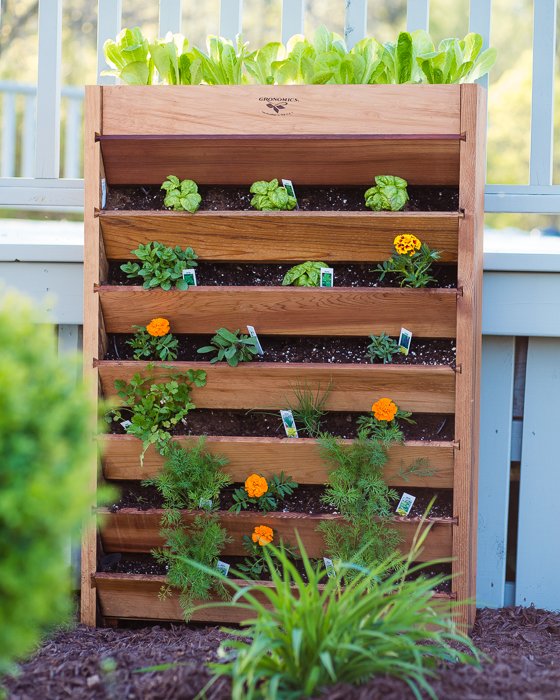
Herb gardening can be even easier, and much more attractive with the Cedar Wooden Vertical Planter from RaisedBeds.com. The 2 square foot footprint makes it possible to garden just about anywhere, from your sunroom to your patio or porch. We love the fact that it arrives at your doorstep fully assembled, and the high quality 100% western red cedar is not only beautiful and aromatic, it also serves a double purpose of keeping pesky bugs at bay; very helpful for gardening leafy herbs!
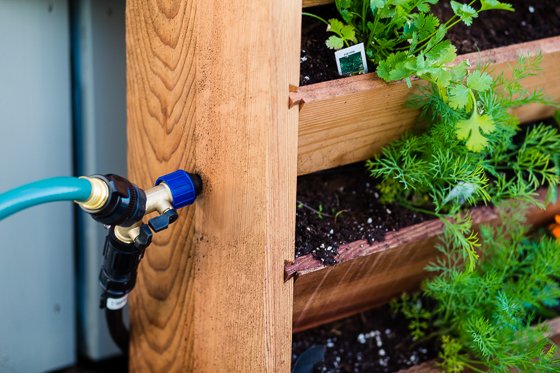
The Cedar Wooden Vertical Planter features an amazing, integrated drip line irrigation system, so you can water smartly while providing your precious plants ample moisture to grow large and prosper. Raisedbeds.com offers an exclusive 5 year warranty and has a 4.5 cubic foot soil capacity. Even though it’s compact, it uses the space wisely, offering over 17 linear feet of growing space. We also love that it’s handcrafted fully in the U.S.A.
The Cedar Wooden Vertical Planter is 45″H x 32″W x 9″D and arrives at your doorstep ready to be finished (we chose to use mineral oil) and filled with your favorite herbs.

Raised garden beds are a great option if you are short on space, have contaminated soil or have limitations with your mobility (i.e. back troubles). They can be placed anywhere there is adequate sun and can be built as far off the ground as you’d like, which can help keep animals from accessing your crops and gives you easy access. They tend to have better drainage than plotted gardens so the roots aren’t as likely to get waterlogged and the soil doesn’t tend to get as compacted. However, raised beds can be more costly. You may need to purchase both the materials to build your raised bed as well as soil to fill it. Roots can dry out quicker so they may require more watering than a plotted garden. Also, depending on the size of your raised bed, you may be limited to how many and what type of crops you can grow. Some crops such as pumpkin, watermelon, and winter squash crawl as they grow, taking up a lot of space.
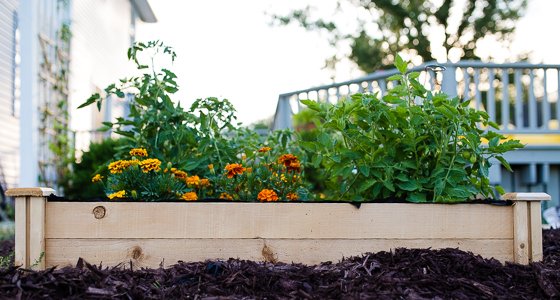
If you have a nice, sunny area in your yard with healthy soil, a plotted garden is a great choice. You can till it by hand or with a rototiller and begin planting. Crops stay hydrated longer when planted in the ground, and roots are able to become more established. Unfortunately, without a proper fence surrounding your garden, a plotted garden can become a buffet and playground to wildlife or neighborhood dogs. By fencing in your garden you lessen the risk of animals stealing your crops. You may also want to bury rocks under your fence to deter animals from digging their way in.
One thing your garden will need is adequate water. There are five main types of watering techniques used by gardeners.
- Drip irrigation is ideal for gardens with long rows of crops that are on level ground and kept weed free. The last thing you want is the weeds in your garden stealing water from your crops.
- Soaker hoses are another option and are a simple DIY. You can easily take old hoses and puncture holes into them to create a soaker hose. This type of irrigation works best when crops are close together or in raised beds.
- Irrigation ditches require no special tools. Simply hoe small trenches alongside your rowed crops and allow the trenches to fill with water.
- Using a sprinkler is also an option, however, in order to be effective the sprinkler head must be level or above your crops. If this is the method you choose, be sure that you aren’t wasting water by watering things other than your garden.
- Watering by hand can be time consuming, but if your garden consists of a small bed (raised or in the ground) or just a few potted/container crops, using a watering can will suffice.
You’re ready to start your own garden – yay! But, what crops should you start with? There are some crops that are high yielding, low maintenance, and perfect for a beginner gardener. Lettuce, whether it be romaine, spinach, kale, etc., grows quickly, takes up little space, and is simple to harvest. It is the perfect crop to grow in either a raised bed or a plotted garden. Both tomatoes and cucumbers are crops that can be grown in a container if you don’t have space for a garden. Tomatoes do best when they have a cage or stake for support, but there are hybrid plants that don’t need stakes. Cucumbers grow on long vines so they can take up minimum space if they are given something to climb. Green beans are a great starter crop. They are easy to start by seed and take up a small amount of room, producing lots of delicious beans. Zucchini is another great crop to start with. They take up a bit more space, but all you need is one or two because they produce so much. Lastly, root vegetables such as carrots, turnips, and radishes are another great choice. These are low maintenance – plant them in the spring and harvest them in the fall.
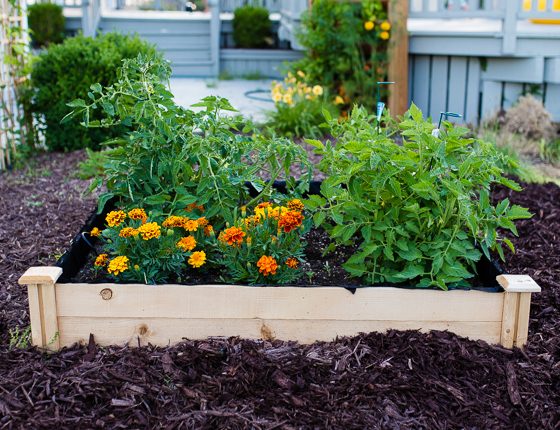
The Economy 4’x4′ Cedar Raised Bed from RaisedBeds.com is the perfect addition to any backyard, whether it be a full blown homestead or a home in the suburbs. It appeals to a seasoned gardener, or someone not sure of their gardening commitment and ability, and would prefer to “test the waters.” It is beautifully crafted in the U.S. using solid white cedar wood, and can be built to either 10.5″ tall or 14″ tall.
The modular design allows you to add more beds into the mix, making it larger after you prove your successful green thumb. The simplistic design is stylish yet also rustic, and we love how the dovetail joints slide effortlessly into place. You literally don’t even need a single tool to install it!
The Economy 4’x4′ Cedar Raised Bed is the perfect addition to any garden, and is also affordable enough to buy multiples!
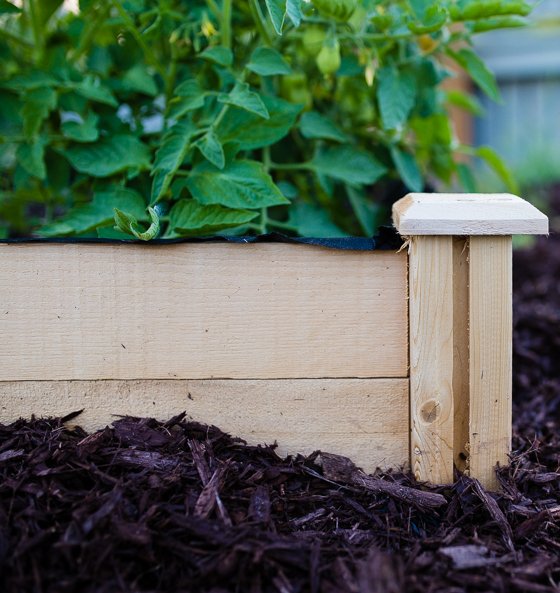
SHOP
Economy 4’x4′ Cedar Raised Bed
EXPLORE AND CONNECT
RaisedBeds | Facebook | Twitter | Pinterest | Instagram
Keeping Animals/ Livestock

A great addition to any homestead are farm animals. Three of the most popular animals for a beginner homesteader are chickens, goats, and rabbits. Before raising any of these animals, be sure to check your county and/or city ordinances. Many towns have limits and regulations on what types of animals you can own as well as how many.
Chickens
Chickens have been affectionately referred to as the ‘gateway animal’ when it comes to raising farm animals. They are a great starter for a homesteader and can provide fresh eggs, meat, and, believe it or not, companionship.
Ready to take the plunge and get chickens? Great! Be sure and do your research to figure out what type(s) of chickens will benefit you the most. Some chickens are cold hardy and are more ideal for climates with a colder winter. Some chickens are higher egg producers than others. There are also certain breeds that are more ideal for meat than egg laying.
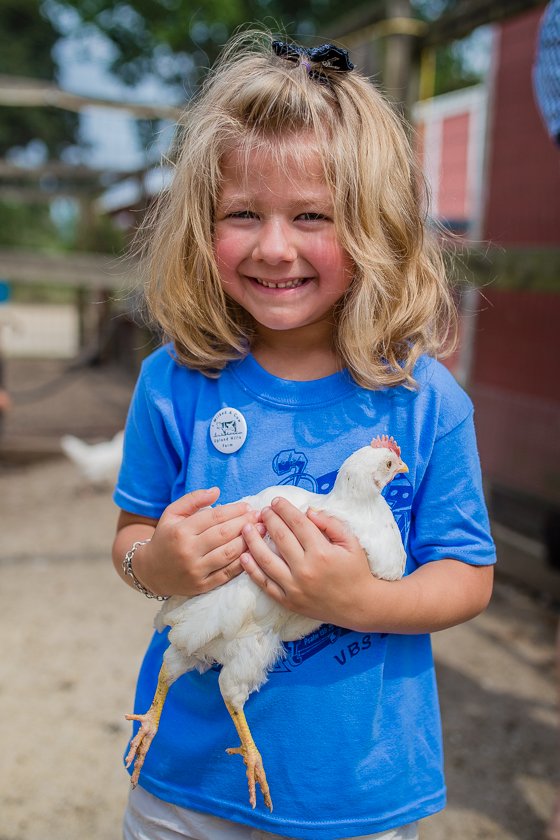
If you decide that backyard chickens are for you, the first thing you’ll need to do is get a coop built and set up. Their coop needs to have adequate air flow and be predator proof. Generally, a coop needs two square feet of floor space per chicken, one nesting box per three chickens, and roosting bars for the chickens to sleep on at night. Pine shavings or straw make an excellent base to the floor of the coop as well as in the nesting boxes. They also make excellent additions to your compost when it comes time to clean out the coop.
An outdoor chicken run will make your chickens extra happy. The more grass, bugs, weeds, and dirt they have access to, the better. Just like the coop, their run needs to be predator proof as well. Predators can come from underneath as well as above. If you have concern of an animal digging under a fence, it’s best to bury chicken wire at least six inches below the ground. Overhead cover from an awning or a large shady tree will deter overhead flying predators, but not ones that could climb a fence to enter the run.
Just like any other living thing, chickens will thrive the best with adequate food, water, and shade. Chickens eat a lot and drink even more. Making sure that they have plenty of food and fresh, cool water will keep them happy and laying those delicious, fresh eggs.
Product Recommendation
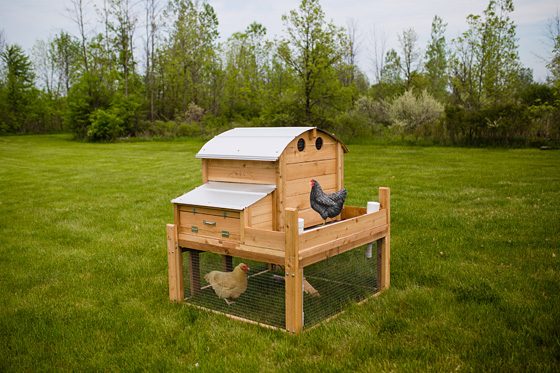
If you’re going to raise chickens, one of the top essential items you must provide is adequate housing that will provide a safe place for them to live, that will keep them safe from predators and keep them comfortable year round. The Round-Top Backyard Chicken Coop from Urban Coop Company is (by far) a customer favorite.
While it may not be a top priority for everyone, it is attractive. We love the design, and often get remarks that the coop resembles a high-quality child’s playhouse. On top of being attractive, it’s extremely functional. It’s strong and safe. It is made from solid cedar wood, which has a great smell (that, as an added bonus, deters bugs!) and unbelievable longevity. You won’t be stuck replacing this coop any time in the near future, and, instead, can add on to it easily to suit your chicken raising needs. The cedar wood comes from the Northeastern part of the U.S., the roofing comes from the east, and most of the fasteners are U.S.A. made as well. If you buy a coop from Urban Coop Company, you not only get an amazing chicken coop sure to last, but you’re buying into a family business with impeccable customer service and a true passion for chicken-raising and charity.

Without any extensions, it is suitable to house 2-6 hens (depending on size/free range access) and with other options available, can comfortably house up to 20 hens. No corners were cut in the construction of this chicken coop. High quality materials, as well as solid metal (top notch quality) hardware, and 16 gauge galvanized welded wire, will impress you or whoever assembles your coop.
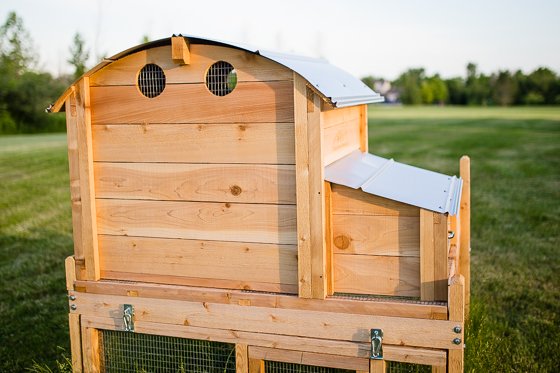
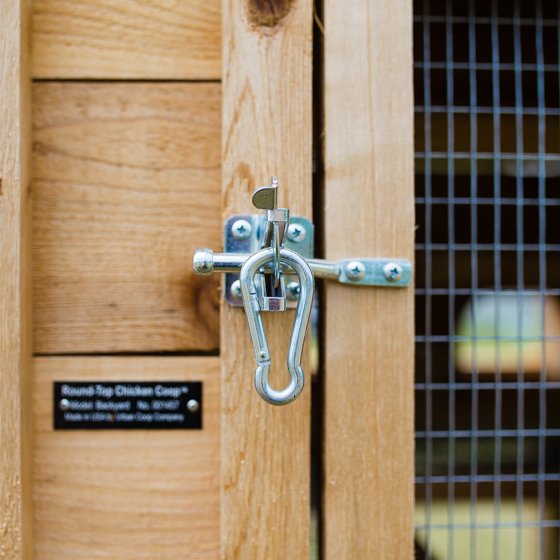
All the essentials for your feathered friends are also there, such as:
- a removable side panel, for easy access to clean the run, and raking into a compostable pile.
- 25 square feet of space, 50 square feet with run extension.
- high quality locking door handles ensure no unwanted predators will get in.
- easy access run area, so free-ranging is easy and chickens will be able to return home whenever they wish.
- easy clean wire flooring will allow proper airflow and ventilation.
- ramp to roosting area and nesting boxes can be shut and locked for extra night-time predator protection.
- galvalume metal roofing and neoprene clad screws for a long, waterproof service life.
- included side boards for the top of the run allow additional storage area.
- double nesting box area with outside (locking) door, so you can collect eggs with ease and they can be comfortable laying.
- ventilation “windows” in the top roosting area.
- two 33″ adjustable roost bars let birds sleep comfortably.
- round top design allows birds plenty of “head room” in roosting area, even for tall/large breed chickens and roosters.
- free (with coop purchase) personalized name board is laser-printed and adds another fun addition to your family’s backyard coop.
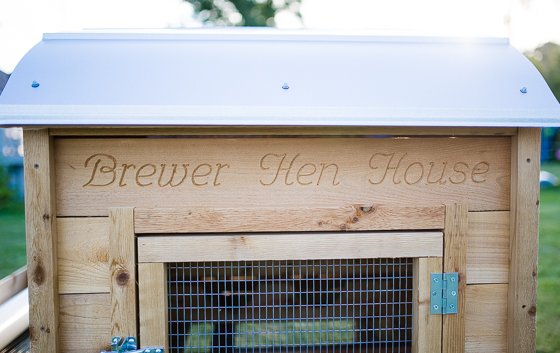
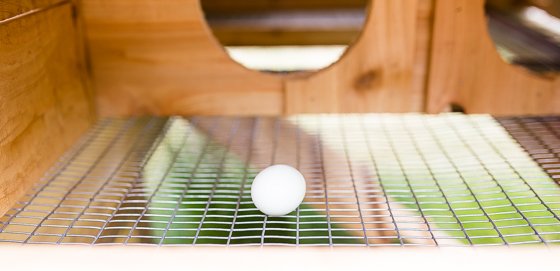
As mentioned before, the Round-Top Backyard Chicken Coop is jam packed with additional accessories to expand your coop. Here are a few of our tried and true favorites:
The EZ Fill Feeder is true to its name. You can fill the feeder from outside the coop, so you won’t be stuck crawling around in the mud, and your chickens will always have access to clean food. Did you know that chickens have the nasty habit of roosting on their food and water feeders? When chickens roost – they poop – often contaminating their own food and water source. Take the worry of that away with these handy gravity-type feeders. Plus, it holds 7 pounds of feed!

The EZ Fill No Poop Waterer takes up no additional run space, and stays clean while chickens utilize a nipple-style waterer. You can fill it from outside the coop, and it can hold an impressive 5 gallons of water. We also love the free slotted cap, because you can use an immersible heater that you provide which will keep the waterer from freezing during the winter time.
The Storm/Snow Panels are a great option to add additional protection to the outdoor run area to keep them dry from sideways rain or extreme snow.
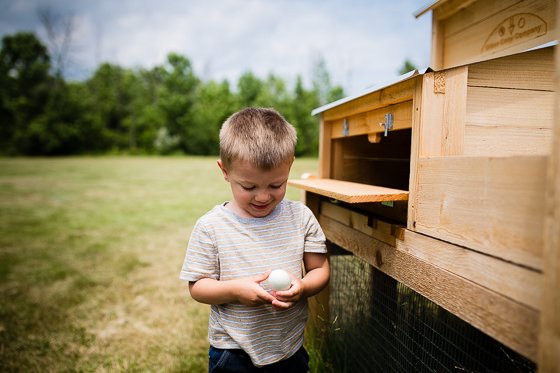
About Urban Coop Company:
Urban Coop Company is a family owned and operated business out of Texas. Husband and wife team Dyan and Montie take great pride in building quality, handmade chicken coops that they are proud to sell, and also use themselves in their own backyard. Urban Coop Company began in 2012, when Dyan and Montie wanted to embark in the fun experience of chicken-raising, yet they were disappointed at the available options on the market for consumers to purchase, ready-made. They set out to design the perfect chicken coop, and after rigorous testing themselves, as well as consultation from the Texas A&M poultry department, the Round-Top Chicken Coop was created. Their team is fully devoted to building quality chicken coops, and during the peak season employs up to a dozen local people, typically aspiring musicians from nearby Austin. If you call Urban Coop Company or email them, you will talk directly to the owner Dyan, while their own children also have lots of chicken knowledge themselves and have been known to help inventory materials, cut wood, or help their mom in the packing department.
When all is said and done, Urban Coop Company is honestly just as excited as you are about backyard chickens, and they know what they are doing. You’ll receive top-notch customer service, and you (and your chickens!) will quickly become part of their family.
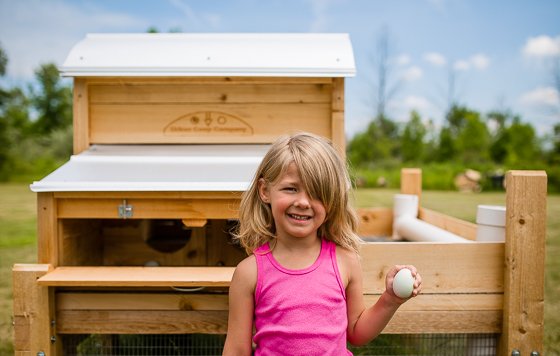
SHOP
Round-Top Backyard Chicken Coop
EXPLORE AND CONNECT
Urban Coop Company | Facebook | Twitter | Pinterest | Instagram
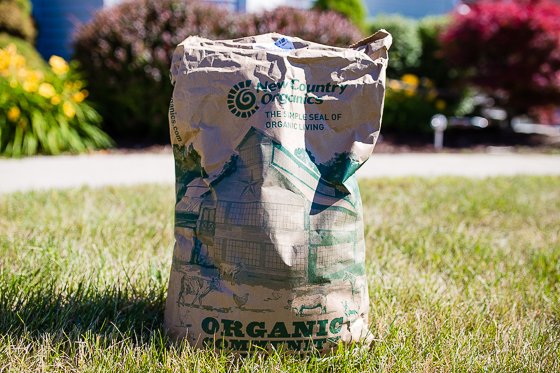
Starting a flock of chickens can sometimes be overwhelming. You may not have grown up around them to see, first-hand, just how easy of a pet they truly are. You know that you want your chickens to be happy and healthy, as well as produce the best quality eggs possible. Walking into your local feed store may leave you disappointed to see your selection of chicken feed may be the same brand as dog and cat food brands you find at Target. Shouldn’t your chicken feed be different?
Additionally, if the purpose of raising chickens is to bring you the best egg available, shouldn’t your chicken be eating high-quality, organic feed as well? Farm-fresh eggs taste better, and that’s a fact. But nothing tastes better than eggs laid by chickens eating organic, soy free feed, and also have free-range access. Our chicken feed of choice from day one and beyond is New Country Organics.
New Country Organics doesn’t think that organic has to equal trendy or cool, or even expensive. They want to help us live our lives by making better choices. They are taking back the food supply, one backyard egg at a time. Their feed is fresh, and they grind and mix it in milling runs designed to keep the right quantities of each mixture on hand, making sure the feed is fresh and ready to be delivered to your doorstep. They feel passionately that certified organic and non-GMO grains are healthier, safer and more nutritious for your animals (and, in turn, for you!)
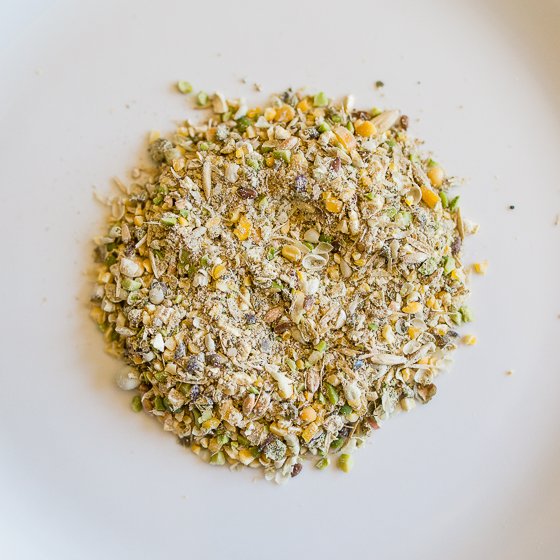
All of their feed is soy free. Why? Because soy is in everything these days. If it comes in a box and is meant to be edible, the chances are extremely likely that soy is on the ingredient list. And the chances are high that the soy is genetically modified (unless it says “Organic Soy”). 96% of the soy grown in the U.S. is genetically modified, and we, as Americans, have a diet that is unusually high in soy compared to other countries across the globe. Soy isn’t good for animals either, so New Country Organics feed is always organic, and soy free!
There are a variety of organic feeds available, from chicken starter feed, to grower feed, to laying feed (as well as many different animal’s as well.) The website is quick and easy to use, and also offers a vast amount of information available for any chicken/animal related questions that you may have. All of their feed is chock-full of essential nutrients and vitamins, as well as kelp. With out-of-state shipping available, you can always keep the best chicken feed on hand for your backyard flock.
Goats
Goats are another fabulous addition to a homestead. They can provide milk, meat, or fiber for fabrics depending on which breed(s) you choose. They are herd animals, so getting just one goat isn’t the best idea. They get lonely and need companionship. You’ll want to get at least two for your homestead.

Goats are smart, curious animals. They can climb, jump, knock things down, and escape. When building a home for your goats you’ll need to be sure that you use fencing that is at least four feet high and they are unable to stand, climb on, jump on to, or knock down. They need to be protected from the elements, kept dry, and have a draft-free shelter. If you live in a mild climate, a three-sided structure will suffice. Just be sure that they are unable to climb on the roof. The floor of their shelter should be covered with pine shavings, straw, or hay.
Goats are known to eat almost anything, but you may be surprised to know that they are not classified as a grazing animal, like its sheep friend. Many plants can be poisonous to goats, so please research any type of shrub, tree, plant, or bush that they may be able to munch on. They will also eat bases of trees so be sure to protect those with fencing if they have access to them. Goats need fresh grass, as well as hay, for a healthy diet.
Goats come in many different sizes, so even if you don’t have a huge homestead, there is most likely a goat that will be the right fit for your needs. If you’re looking to add fresh milk to your homestead, Nigerian Dwarf goats are a popular breed for smaller homesteads. Many think that their milk tastes the closest to cow’s milk, because of its higher buttermilk fat.

If you’re interested in learning more about goats, find a local breeder. They are usually more than happy to tell you more about their herd, and talk to you about the importance of pedigree, milk lines, and herd raising. Many will also let you taste their milk, so you can have a good idea of what it would taste like if you buy a baby (also known as a “kid”) from their herd.
Rabbits
Rabbits can be an indoor or outdoor addition to your homestead. They are becoming more popular for their meat due to it being lean, healthy, and inexpensive. Others may choose to raise rabbits for their fur or just for a pet. They are extremely social animals.
Rabbits need at least five square feet of space in their cages. They need to be able to stand, lay, and move around without being cramped. Of course, rabbits come in all different sizes so the bigger they are, the bigger their cage needs to be. If you choose to keep your rabbit(s) outside, be sure to keep them someplace in the shade and dry. They need fresh water, veggies, grass, and hay every day. For the happiest rabbit, build an outdoor run where they can safely explore and graze on grass. Be sure to build it in a shady part of your yard and keep water available to them at all times.
Rabbit manure is one of the best fertilizers for your garden. You can add it directly to your garden or throw it into your compost. Rabbits can be the most cost effective homesteading animal – they don’t eat a lot or take up a lot of space. But, they are high maintenance. You will need to give them attention and clean out their cage daily to keep them happy and healthy.
Product Recommendation
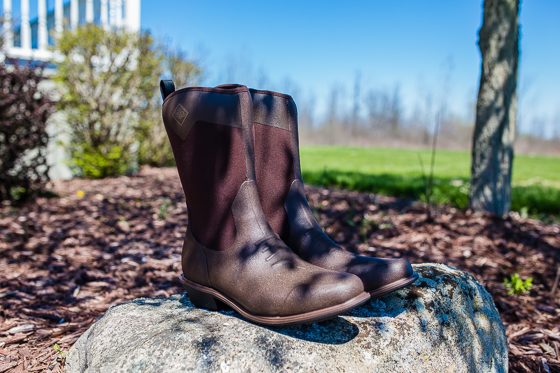
No matter what way you look at it, having a homestead is sometimes a messy job. From schlepping through the mud trying to protect your crop from the frost, to retrieving eggs in the rainy season, to milking goats in the snow, you’re going to need a good pair of boots that can handle it all. If you’re in the market for the perfect “barn boots”, look no further than The Original Muck Boot Company.
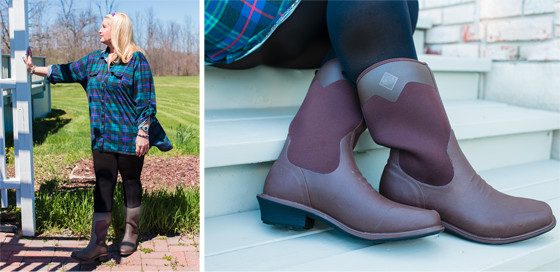
The Ryder Mid Muck Boot is an ultra-stylish equestrian style boot that any cowgirl at heart is sure to love. It’s 100% waterproof, and the narrow toe is perfect to put inside a horse stirrup, or hang them in the barn so that your foot stays dry and comfortable inside, while keeping all the muck outside. The pull-on side handles make it easy to put on or remove, and the mid-calf length is breathable and will keep you cooler during the hot months. Your foot is sure to remain dry, because the etc® sockliner wicks away moisture from the foot, and the XPressCool Lining keeps it breathable and comfortable. It’s available in two stylish colors: black and brown.
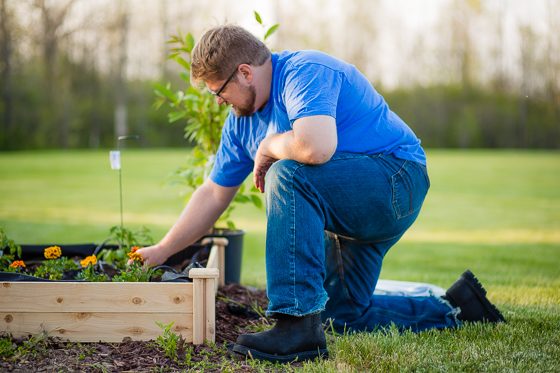
For the homesteading husband, we love the Wellie Classic Muck Boot. The rough and tough gripping sole will keep him comfortable on the unforgiving terrain surfaces on your farm, and the reinforced Achilles, Gel-Core™ sub-sole cushioning and a tempered steel shank will support his foot for many hours. The Wellie Classic is 100% crazy horse full grain leather, and is also completely waterproof. It boasts a Hydroguard® membrane and breathable Airmesh lining to keep feet warm in winter, cool in summer and dry in any season.
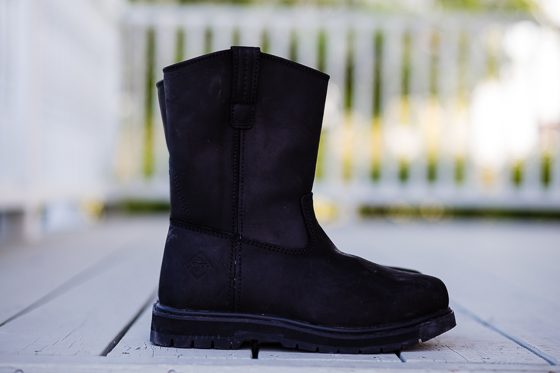
The Wellie Classic has many different color options to match his style, as well as a composite steel toe option as well, if he’s a man who works around machinery or on construction sites. There are also two width sizes available: medium width and wide width.
SHOP
Ryder Mid Muck Boot | Wellie Classic
EXPLORE AND CONNECT
The Original Muck Boot Company | Facebook | Twitter | Pinterest | Instagram | YouTube

Homesteading or urban farming is hard work, however, the benefits are plentiful. You can rest assured that you are giving your children a full life of experiences, showing them the value of hard work, teaching them responsibilities and pride in ownership, and being an amazing role model for a child. Even if you don’t want to get into all of the above aspects of homesteading or farming, some of these items can be done in an urban setting as well, from growing some organic tomatoes on your city balcony, to having a small flock of chickens in your backyard in the suburbs. Give it a try, and see how rewarding it can be for your family!
Like this post? Make sure to check out this one on Eco-Friendly and Unique Ways to Garden.
Photo Credits: Erika Zane Photography, Memoirs Photography, Kristen D.
 This article was co-written by Sara. Sara lives in Michigan with her husband and is a stay-at-home mom to her 5 year old son and 3 year old daughter. She loves date nights with her husband, Spin class, cooking from scratch, gathering fresh eggs from her chickens, gardening, play dates at the park, popcorn, and chocolate. She and her husband are enjoying making their house into a homestead. She also writes on her personal blog, The Hayes Homestead.
This article was co-written by Sara. Sara lives in Michigan with her husband and is a stay-at-home mom to her 5 year old son and 3 year old daughter. She loves date nights with her husband, Spin class, cooking from scratch, gathering fresh eggs from her chickens, gardening, play dates at the park, popcorn, and chocolate. She and her husband are enjoying making their house into a homestead. She also writes on her personal blog, The Hayes Homestead.





